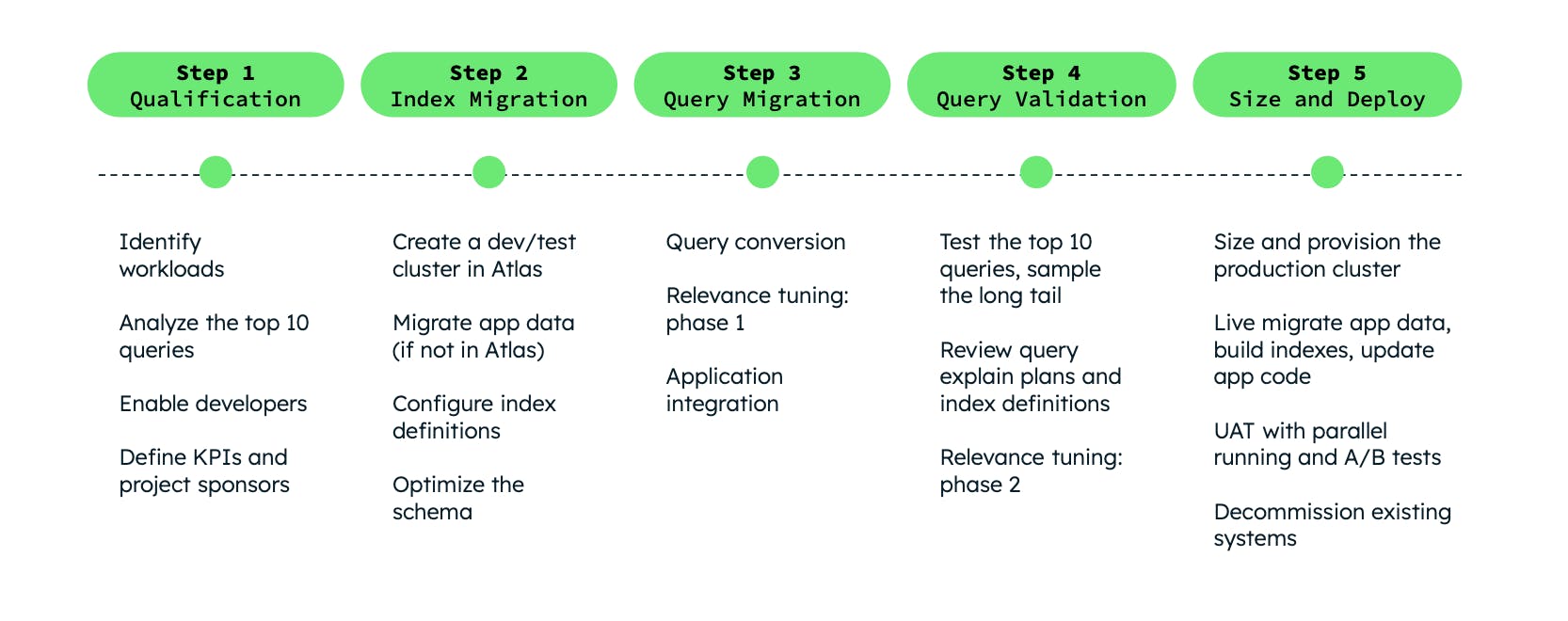What do a global auto manufacturer, multinational media and entertainment company, and a challenger bank have in common? They have all made the switch from Elasticsearch to MongoDB Atlas Search to simplify their technology stack and ship application search faster.
But what problems were they solving and how did they migrate? We have a new 5-step guide that takes you through why they switched, and how they did it.
The need for application search
Type almost anything into a search bar on sites like Google, Amazon, and Netflix and you are instantly presented with relevant results. Whether you make a typo or enter a partial search term, the search engine figures out what you are looking for. Results are returned conveniently sorted by relevance and are easy to navigate with features like highlighting, filters, and counts.
Everyone now expects these same fast and intuitive search experiences in every application they use, whether at home or at work. However, creating these experiences is hard with the burden falling onto developers and ops teams who have to build and run the underlying systems.
The pain of building application search
MongoDB has always focused on accelerating and simplifying how developers build with data for any class of application. From our very earliest MongoDB releases, we saw developers needing to expose the application data stored in their database to search and information discovery.
For simple use cases – where it was enough to just match text in a field – developers were able to use the basic text search operators and index built into the MongoDB database. However these lacked the much more sophisticated speed and relevance tuning features offered by dedicated search engines, typically built on top of Apache Lucene.
As a result many developers ended up bolting on an external search engine such as Elasticsearch or Apache Solr to their database. Elasticsearch and Solr were (and remain) popular and proven. However as Figure 1 shows, they introduced a huge amount of complexity to the application stack, reducing developer velocity while driving up risk, complexity, and cost.

Working with the MongoDB community, our product designers and engineers ideated on ways to make building application search easier for developers – without compromising on the key features they needed. The result is MongoDB Atlas Search.
What is Atlas Search and why switch to it?
Atlas Search embeds a fully-managed Apache Lucene search index directly alongside the database and automatically synchronizes data between them.
By integrating the database, search engine, and sync pipeline into a single, fully-managed platform you get to compress three systems into one and simplify your technology stack. Engineering teams and application owners have reported improved development velocity of 30% to 50% after adopting Atlas Search. This is because they get to:
-
Eliminate the synchronization tax. Data is automatically and dynamically synced from the Atlas database to the Atlas Search indexes. They avoid having to stand up and manage their own sync mechanism, write custom transformation logic, or remap search indexes as their database schema evolves. They escape the 10% of engineering cycles typically lost to manually recovering sync failures, investing that time to innovate for their users instead. (1)
-
Ship new features faster. They work with a single, unified API across both database and search operations, simplifying query development. No more context switching between multiple query languages, and with a single driver, build dependencies are streamlined so they release faster. They can test queries and preview results with interactive tools to fine-tune performance and scoring before deploying them directly into application code.
-
Remove operational heavy-lifting. The fully-managed Atlas platform automates provisioning, replication, patching, upgrades, scaling, security, and disaster recovery while providing deep performance visibility into both database and search. By working with a single system, they avoid an exponential increase in the number of system components they need to design, test, secure, monitor, and maintain.

5 steps to make the switch to Atlas Search
The benefits Atlas Search provides has led engineering teams across all industry sectors and geographies to make the switch from bolt-on search engines. Through the experiences gained by working with these teams, we have put together a repeatable 5-step methodology to replacing Elasticsearch and Solr.
The guide steps you through how to:
-
Qualify target workloads for Atlas Search.
-
Migrate your indexes to Atlas Search.
-
Migrate your queries to Atlas Search.
-
Validate and relevance-tune your Atlas Search queries and indexes.
-
Size and deploy your Atlas Search infrastructure.

The guide wraps up with examples of customers that have made the switch and provides guidance on how to get started with Atlas Search.
What's next?
You can get started today by downloading the 5-step guide to replacing Elasticsearch and Solr with Atlas Search.
The 5-step guide is designed to help you plan and execute your migration project. MongoDB's Professional Services team is also available to you as a trusted delivery partner. We can help you through any of the steps in the methodology or throughout your entire journey to Atlas Search.
If you want to dig deeper into Atlas Search, spin it up at no-cost on the Atlas Free Tier. You can follow along with reference materials and tutorials in the Atlas Search documentation using our sample data sets, or load your own data for experimentation within your own sandbox.
Welcome to a world where application search is, at last, simplified!
1. Based on interviews with engineering teams that have replaced bolt on search engines and the associated sync mechanism.